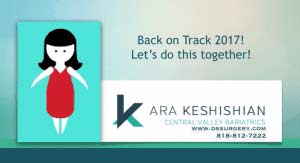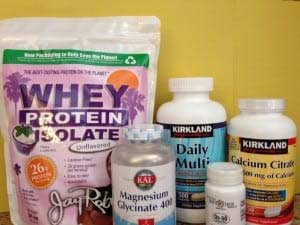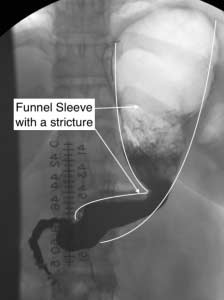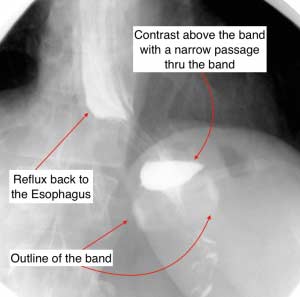Category: Health
Protein Intake
October 14, 2019 7:08 am
Protein intake requirements change over time following weight loss surgery. This is based on the requirements imposed on our body by a number of variables. These include, activity level, muscle mass, over all health condition to name a few.
A very young muscular athletic male with a BMI or 30 will require much higher protein intake (and absorption) that an inactive older Female with the same BMI. The same young athletic male will require much higher protein intake is he is recovering from a surgery than his baseline.
As we have stated in the past, the protein intake, should be adequate and not excessive. High level of protein intake that are not accounted for based on muscle mass and activity level, will eventually result in weight gain. The best measure of protein intake in a stable weight patient over 3-4 years post op is their albumin and protein level. Following your yearly laboratory values at a minimum is an important part of weight loss surgery follow up care.
You also need to adjust protein intake when necessary. Protein needs increase depending on physical needs, infection, healing, pregnancy, surgery, age, injury, etc. Plastic surgery requires higher protein needs for appropriate healing.
Information on protein sources and quality here.
The basic formula for protein intake is 1gm/kg of ideal body weight. The calculator below will provide a guide for the protein into based on your stable weight in lbs.
Back on Track 2017 Giveaway
January 10, 2017 10:03 am
Let’s get back on track 2017 after the holiday season! The holidays were wonderful but if you find yourself with a few extra souvenirs don’t feel alone. The average American gains between 1-8 pounds during the holiday season and I am no exception. Let’s get back on track 2017 together.
Time to clear out the kitchen! Disposing of temptations and high trigger foods is the first step to getting back on track. If the food isn’t easily acquired then it is less likely to be consumed.
Stock up on high protein and whole, unprocessed foods that are low carbohydrate and nutrient dense. When quality foods are easily available we are more likely to stay on track with the types of foods we should be eating. Simple sugars/carbohydrates are the biggest culprit of holiday weight gain. We need to go back to the basics of hydration, high protein, low carbohydrate/sugar, vitamin/mineral supplements and exercise. Simple sugars and carbohydrates are easy for our bodies to use and absorb and cutting them back can jump start your weight loss. Each individual needs to identify the daily carbohydrate intake that works for them. Some people stay under 50 grams of carbohydrates daily. You may also need to look at your protein and fat intake. All excess nutrients absorbed have the potential to turn into fat mass and inhibit weight loss. Metabolism video.
Hydration is an important ways to start getting back on track. Water is essential to life functions. The brain is 85% water, blood is 80% and muscle is about 70% water. Hydration aids in digestion, eliminating waste, byproducts and toxins. It also can decrease the feeling of hunger. Lack of hydration can increase fatigue which can lead to craving high carbohydrate foods to increase energy.
Protein’s importance in almost every bodily function and muscle mass can not be ignored. High quality complete Protein sustains muscle mass during weight loss, aids immunity, antioxidant function, and enhances leptin and insulin function. Filling up on protein first will help with carbohydrate carvings and give a sustained satisfied feeling. A prior blog post gives additional information on the importance of protein and the effects of protein malnutrition. WLS makes daily protein intake important but especially after Duodenal Switch, protein is a necessity of daily life.
Vitamins, minerals and supplements will ensure the body has the nutrients it needs to function adequately and can keep cravings at bay. Deficiencies in vitamins and minerals can cause cravings for foods. Vitamin and minerals are essential to muscle function, red blood cell production, bone health, and numerous other physiologic functions. We may all slack off on our supplements occasionally but now is the time to get back into the habit of daily vitamins and mineral supplements. A daily vitamin, mineral, and supplement routine is a lifetime commitment after Duodenal Switch or any WLS. Here is a list of commonly used supplements.
Exercise can increase weight loss, overall well being, mental well being, mood, alertness, improve digestion, improve sleep, and increases energy levels. Exercise does not have to be a daunting task. Simply adding 15-30 minutes of activity can give added benefits. Yoga, walking, dancing, lifting weights, hiking, and sports activities can be included or added to more traditional forms of exercise. There are many free online videos for all types of exercise available.
Finding a new hobby can keep both your hands and mind busy, curbing the unconscious eating of foods that are high in sugar and carbohydrates. Adult coloring books, drawing, painting, knitting, crocheting, sewing, dance lessons, gardening, learning to play an instrument and many others are great ways to use your time and expand your quality of life and brain function. New hobbies can also help establish new coping skills. Our previous post on Coping Skills After Bariatric Surgery can be found here. There are a whole host of online videos for “how to” on new hobbies.
Teaming up with others can also help increase weight loss and compliance. Support from friends, family and other groups will assist you. There is a whole gamut of support group online and in person. If you have fallen out of the habit of attending our support group or webinars get back to them. You can find our schedule and announcements regarding webinars here. Our Central Valley Bariatric Facebook page also gives daily inspirational messages, protein recipes and articles and any new information or research available. There is also our Duodenal Switch Facebook Group. Anything that increases accountability is a benefit and motivates us to stay on track.
Experiment with new recipes and flavors that are bariatric friendly and within your dietary needs. There are so many options for quick and easy meals. We have several recipes on our page for all stages following weight loss surgery and Duodenal Switch. However, there are endless option on the internet in Paleo, low carb, and high protein type recipes.
In the spirit of new starts and getting back on track 2017, we are having a giveaway with the basics to get back into the swing of things. This year we are looking for before and after weight loss surgical journeys. Share your weight loss journey! Don’t be shy, your journey can inspire others and/or motivate yourself. To enter the Back on Track 2017 Giveaway, please submit your weight loss surgical journey with before and after pictures to contact@dssurgery.com or you can also post your before and after pictures on our Facebook page. You will also need to sign a release for the use of your story on our website. We will draw 2 names from those that enter by announcing it on our FaceBook page or by e-mail on January 31, 2017. You must submit your mailing information to contact@dssurgery.com in order to claim the prize.
Exercise Benefits & Events
August 09, 2016 2:25 pm
Exercise and it’s benefits for body, mind and weight loss can’t be over emphasized. Everyone can benefit from some form of exercise whether it be a brisk walk, chair exercises, exercise bands, aquatics, running, hiking or biking. As a family we try to exercise often and attempt to participate in at least one event a month or so. These types of events tend to keep us more accountable and motivated. The group atmosphere, energy and vibe only add to the experience. Listed below are some of our favorite exercise events. We will update this list and add to it.
Physical Benefits:
- Weight loss and maintenance can be a benefit of exercise. It also improves muscle function and strength.
- Improves Type 2 Diabetes and Metabolic Syndrome
- Reduces some Cancer Risk
- Improved Cardiovascular Health
- Improved “Good” cholesterol
- Strengthens and improves Bone Health
- Living longer
- Improved Sleep
Mental Health Benefits:
- Reduce Stress
- Boosts Endorphins
- Helps with Anxiety
- Improved Self Confidence
- Being in the Great Outdoors and Sunlight (increases Vitamin D)
- Prevent Cognitive Decline
- Sharpen Memory and Cognitive Function
- Help with Addiction
- Increase Relaxation
One important key note is to pay close attention to hydration with exercise, not only with fluids but electrolytes as well. Exercise increases fluid loss due to sweat and increase circulation to muscle. You need to increase fluid intake to compensate for these losses.
Exercise events by the month:
June
The Los Angels River Ride is one of our families favorites. Great ride for a great cause.
August
Luau 5K walk and fun run This is a fun family activity as they have a kids run and lots of activities. It is also in Griffith Park which is a beautiful and treasured location.
September
The Prudential 401K Run is to promote saving for retirement and is a FREE event at the beautiful Rose Bowl
October
The Aloha Run brings a little Hawaiian feel to the fall.
JDRF One Walk fighting Type I Diabetes
November
City of Hope’s Walk for Hope
December
Santa to the Sea (must bring a gift for a child)
Varying months depending on location:
Get your Rear in Gear to fight Colon Cancer
CicLAvia a Los Angeles area quarterly biking event.
Dr. Caya’s Yogurt RecipeExclusive Member Content
December 09, 2015 10:01 am
Pregnancy And Weight Loss SurgeryExclusive Member Content
November 21, 2015 5:34 pm
Failure of Anti-Reflux Procedures
September 28, 2015 7:13 am
A recent study Published in JAMA Surgery, quoted rate of 10-20% of patients who have had anti-reflux surgical procedures will have recurrence of his symptoms within the research data. There are numerous studies that have identified predictive factors leading to return of the symptoms after surgical intervention. Some of these predictive factors are improper diagnosis, inadequate work up and technical issues.
Due to the significant rise of sleeve gastrectomy as well as a high failure rate of the lap band, we have seen several patients presenting with significant reflux disease after weight loss surgery. There is a little scientific data regarding the failure of anti-reflux procedures in patients who have had previous weight loss surgical operations. In our practice, however, we have extensive experience with anti-reflux operations in patient who have had previous weight loss surgeries including Gastric Bypass, Adjustable Gastric Banding, Sleeve Gastrectomy and Duodenal Switch operation.
Improper diagnosis, inadequate work up, and technical issues have been cited as possible causes for recurrence of symptoms in patients who have not had weight loss surgery. One could assume that those variables are still a factor in addition to other factors resulting from a previous weight loss surgery. The complications of a previous weight loss surgery can not be under-estimated; an example would be a patient with significant esophageal motility issues directly related to an Adjustable Gastric Band. Other situations that exacerbate symptoms of reflux are an hour glass shaped sleeve or a stricture mid stomach post Sleeve Gastrectomy or Duodenal Switch.
In our experience, some patients have responded well with anti-reflux surgical procedures and mesh placement if indicated after a compete work up with has included and upper endoscopy, upper GI series, manometry and Ph studies. Any patient with symptoms of reflux after weight loss surgery, should be evaluated, and a complete work up should be performed to establish the proper treatment options. It is not wise to have patients be treated with proton pump inhibitors as a default treatment without a complete work up for any patient with reflux. These class of medications have significant side effects associated with them. Furthermore, prolonged reflux is a factor in development of Barret’s Esophagus, a pre-cancerous condition.
Gall Bladder- Should the Gall Bladder Be Removed During Duodenal Switch?
February 16, 2015 1:17 pm
The indication for concurrent cholecystectomy (gall bladder removal) with weight loss surgery is not clear. There is some scientific literature that recommends against cholecystectomy at the time of the Gastric Bypass RNY operation. To the best of my knowledge, there is no such studies looking specifically at the indication of cholecystectomy with duodenal switch operation.
My rationale for doing a cholecystectomy with every Duodenal Switch patient is that there is not only higher incidence of asymptomatic cholecystitis present but also due to limited access to the biliary tree. The transection of the duodenum and removal of the greater curvature of the stomach both limit access to the biliary tree. Additionally, the patient recovering from weight loss surgery, may not be in the best nutritional status to undergo a subsequent operation for gallbladder removal. A second surgery could add to nutritional issues due to protein needs for healing, risk of infection, hernia formation, etc.
From a technical aspects, in Duodenal Switch operation, the liver and the gall bladder need to be elevated in order to expose the anterior surface of the duodenum where the transection of the duodenum is performed. Doing a cholecystectomy at the time of the duodenal switch operation, more often than not only add a few minutes to the operation. In the majority of patients, long-term this saves them the potential need for a subsequent operation at a later date should they develop gallstones or gall bladder attack.
When I perform a Sleeve Gastrectomy the duodenum is not transected or dissected, and thus I do not remove the gall bladder when doing sleeve gastrectomy. I do, however, remove the gall bladder when doing primary Duodenal Switch for revision from a Gastric Bypass RNY to the Duodenal Switch operation.




